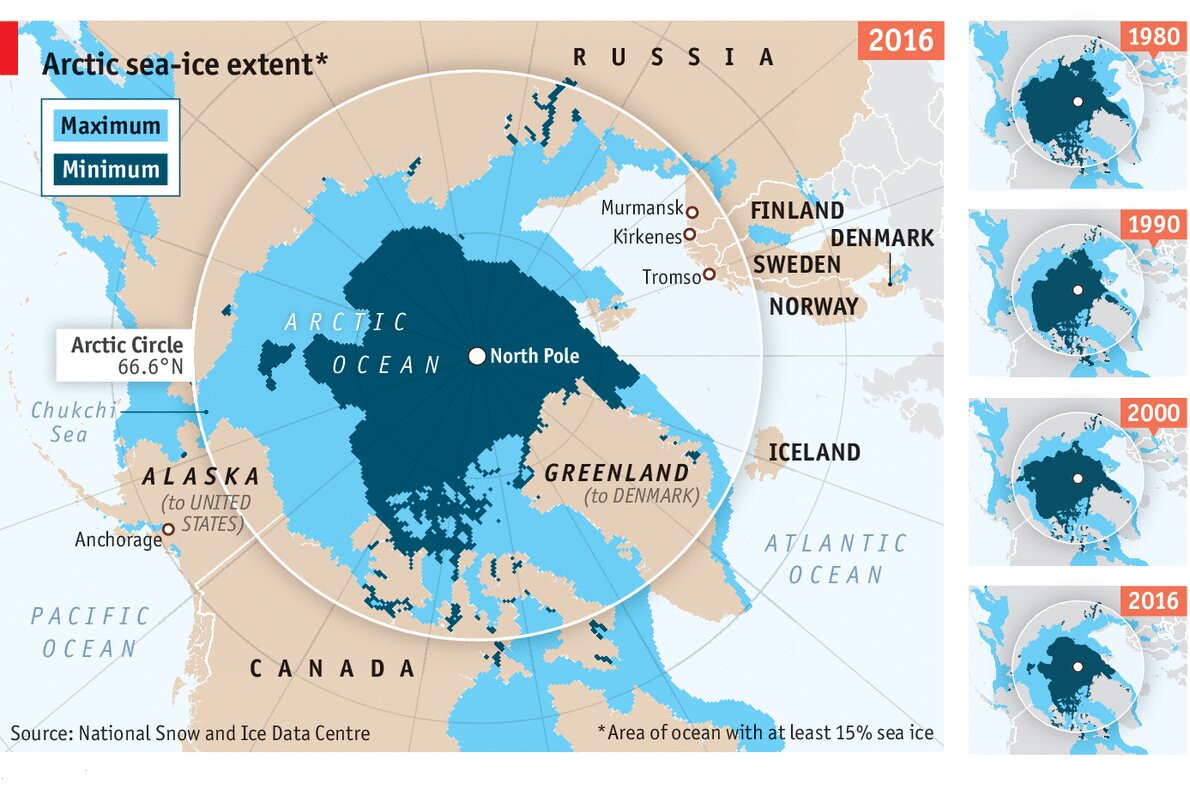Biodiversity & Environment
Shrinking Sea Ice Extent
- 05 Jul 2019
- 4 min read
As per the study of National Aeronautics and Space Administration (NASA), after decades of gradual increases, Antarctic sea ice is now decreasing, faster than that in the Arctic.
- The sea ice extent is a measure of the surface area of the ocean covered by ice.
- The Arctic and Antarctic both are experiencing shrinking of the sea ice extent which proves the effect of global warming on Frigid Zones.
- The satellite observations of Antarctic sea ice coverage since the late 1970s show that after a gradual increase in the Antarctic sea ice over decades until 2014, the trend suddenly reversed completely in the 2014- 2017 period.
- During 2014-2017, the rate of sea ice loss in the Antarctic far exceeded those recorded for the Arctic.
- Climate scientists have been warning of an increase in the frequency of extreme weather events, increased variability and instability of climatic patterns because of global warming. The findings of the study indicate that the Earth has the potential for significant and rapid change.
- The sea surface temperatures in the open waters of the Arctic have been unusually high, up to 5 degrees Celsius above average in the Chukchi Sea, a marginal area of the Arctic Ocean.
- The sea surface temperature is a measure of the energy due to the motion of molecules at the top layer of the sea.
- The World Meteorological Organization (WMO) has stated that 2015 to 2019 were the warmest five years on record.
Possible Causes
- Antarctica is largely protected from atmospheric warming by the westerly winds which surround the continent and Antarctic sea ice does not respond directly to global warming averaged over the whole planet.
- Apart from the climate change, the ozone hole and short-term cycles like El Nino also affect the westerly winds.
- The sea ice also responds to the level of ocean mixing, which is affected by meltwater from the Antarctic Ice Sheet.
Impact of Decreasing Sea Ice
- Increased Global Warming: The bright surface of sea ice reflects 50% to 70% of sunlight back into space. But when sea ice melts, it turns into dark ocean surface, which absorbs 90% of the sunlight. The more light is absorbed, the warmer global systems become.
- Effect on ecosystem: Sea ice also affects the polar ecosystem, including penguins and whales and seals, petrels and albatrosses, krill, and a whole range of additional animals and marine plant life.
- Warming of the poles can lead to greater persistence in seasonal patterns and an increased frequency of extreme events resulting in increased variability and instability in climate.
- The sea ice situation, a clear demonstration of greenhouse gas warming, is a warning of likely future disasters.







